Fashion and technological innovations have always been linked. From the industrial revolution leading to mass production all the way to today, where 3D printing is paving the way back towards customization. Technology has become such a cornerstone of our lives, and the children that have grown up in the era of smartphones expect it to be purposefully incorporated in every part of their life. As Millenials and Gen Z become parents, it will be essential for the kids’ fashion and lifestyle industry to offer these digital natives the shopping experience they are looking for.
With the symbiotic relationship between fashion and technology growing deeper, let’s explore how these sectors are improving each other and working together to create greater things and achieve better results. We’ll start by exploring what technology in fashion means and some of the definitions you need to know, before moving on to how some brands have started incorporating tech into their production process and ways retailers can incorporate technology in a meaningful way, whether in-store or online.
With technology evolving so quickly and new programs being talked about every day, it can be challenging to understand what it all means. Fashion Tech is a term that encompasses all the developments that are shaking up the fashion industry in the digital era. What had become a very traditional sector has been transforming little by little to become the constantly shifting fashion industry of today. The recent advances in technology have gotten the whole value chain of the textile industry involved: from raw materials to creation, design, distribution, logistics, marketing, and recycling. There are changes happening throughout the entire sector from start to finish, some of which we will dive into shortly.
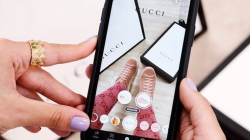 AR Gucci Snapchat filter from medium.com
AR Gucci Snapchat filter from medium.comOne key term that we are hearing is augmented reality (AR). Augmented reality is when technology merges with the real world through phones, headsets, or other lenses that overlay a computer generated 3D image on the real world. One example is using phone cameras to virtually try products and see how they would look. In the image above you can see an example of a Snapchat filter created with Gucci to virtually try on their shoes. Another example of this term is the popular game Pokemon Go, which brought Pokemon to the world. By looking through their phone camera lens, people could see Pokemon that appeared to be sitting on benches, at coffee shops, or around university campuses.
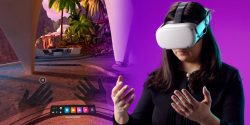 Illustration by Preston Jessee for The Wall Street Journal
Illustration by Preston Jessee for The Wall Street JournalAnother important term is virtual reality (VR). Contrary to AR, virtual reality immerses the user completely in a virtual world. VR is only accessible through headsets like those used for video games where the player is completely removed from the real world to interact and play within a virtual one.
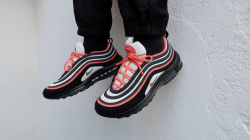 AI designed sneakers by Nike, from obvious-art.com
AI designed sneakers by Nike, from obvious-art.comArtificial intelligence (AI) has gotten even more attention lately. This is a very global term, but at its core is used to describe computer programs that can perform similar tasks to the human brain. The sneakers in the image above were designed by artificial intelligence for Nike. The colors were selected and arranged by an algorithm. Another example of AI is computer programs created that can seem to think, such as ChatGPT. ChatGPT is an application where people can plug in a word or sentence and the computer program will “reply” with a detailed response. Another example is the program Dall-e, where people can type in words and it will generate images that illustrate them. Both of these examples are giving brief prompts to the computer programs that then turn them into images or detailed texts.
Innovation is a fast-paced, expanding part of the fashion industry today. Diving deeper than simple gadgets incorporated into garments, fashion tech is on the rise with new technology like AR, VR, and AI. The creative process and consumer habits are rapidly changing, so let’s explore how brands and retailers can tap into new technology to improve their processes and meet new customer needs.
 Image from Myth AI to show AI generated pattern
Image from Myth AI to show AI generated patternFashion tech is changing the way brands produce and create collections. As we recently discussed in an article here, companies like Variant 3D are making physical samples a thing of the past. Through Variant 3D’s computer programs, brands can create a digital sample that moves and reacts like a physical sample would, eliminating the need for their supplier to create one. This reduces waste of samples that don’t perform the way the designer expected, as well as reduces lead times. Another company, Myth AI, is using artificial intelligence to create patterns. Using their program, designers can upload any image and it will produce options for different motifs based off of the image. AI can also be used to manage inventory and predict demand. 3D printing has been another tool that can be used for creating samples, making accessories, and creating bespoke items specially designed for the individual customer. Brands can also use AI to create buzz on social media, driving new and existing customers to get excited and talk more about the brand. Nike provides two examples of this, one when AI generated images of their iconic styles started circulating online, and the another when an AI generated collaboration between Nike and Jacquemus was shared on TikTok.
Fashion tech has also opened the door for mass customization. Brands can offer their customers more choices in how their garments look, whether that is done by offering choices for cut and color or by the customer uploading their exact measurements by scanning their body with their cell phone. Several brands have started to test new processes for customizing garments. Adidas was one of the first with their “Knit For You” project in 2018. The initiative made double use of AI: first via virtual modeling of the garment, then in its 3D tailoring, it allowed customers to customize their own sweater, knitted on demand. Thanks to this technology, Adidas produced tailor-made garments for each customer. The metaverse is another space where brands can immerse customers in their world. Gucci offers a great example of this, with their digital world on the platform The Sandbox. In “Gucci Vault Land,” players can immerse themselves in the Gucci universe. Diving into the brand’s history, exploring virtual and real products, and playing games are just a few of the incredible experiences players can enjoy.
These innovations can help change our consumption trends to be more sustainable. Despite a growing trend for responsible brands and second-hand clothing, the proportion of collection volumes being put on the market is not decreasing! Removing the need for physical samples reduces waste of time, money, and materials. Offering products that are tailor-made and using AI to track inventory and demand can help brands reduce the risk of overstocking. With these innovations, fashion can detach itself from standardized sizing to become more inclusive of the plurality of morphologies and genders as well.
Today, customers don’t just want to go shopping – they want an experience. Whether making purchases in store or online, customers are looking for a high-tech, effortless experience.
For online retailers, AR has revolutionized the online shopping experience, enabling customers to use their phones to “try on” everything from garments to shoes, glasses to makeup. This removes the challenge for customers that don’t want to take the risk of ordering a product they haven’t tried on by bringing the fitting room experience into their home. AI in the form of chatbots has enabled customers to ask questions and immediately get responses to questions about follow-up of an order, the availability of an item in-store or online, how the return process works, and more.
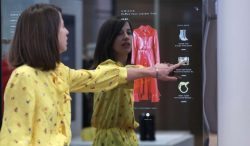 Image from Role of Technology in the fashion industry
Image from Role of Technology in the fashion industryAs customers return to stores in great numbers after the global pandemic, they are looking for a different kind of experience than they had before. Seeking something that links the digital and physical world, retail stores are changing to become more immersive and interactive. With technology like digital mirrors, the fitting room experience is getting a makeover via augmented reality. These devices aim to help customers determine which styles and colors suit them best in an entertaining way. The mirrors superimpose the clothes on the customer’s image on the screen. The interactive mirror allows customers to try on as many clothes as they want without having to put them on – what a time saver! By incorporating AI as well, the mirror can even make suggestions of products to upsell and create total looks.
Another part of the in-store experience seeing changes is checkout. The uses of electronic tablets at the point of sale are endless. Going beyond allowing customers to autonomously make a purchase, electronic tablets can enable customers to check the stock of a product they were looking for, to explore additional information, participate in a competition, or order a product not available in store to be shipped to their home. These renewed versions of the customer experience are meant to enhance and improve the shopping journey, but technology has to be incorporated purposefully and thoughtfully. Brick-and-mortar locations will need well trained employees to assist with the new technology or to offer customers that want a human experience that option. These innovations are all meant to make the shopping experience feel more personalized, whether in-store or online.
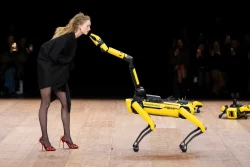 Image by Elizabeth Paton for The New York Times
Image by Elizabeth Paton for The New York TimesFashion tech is about pushing the fashion industry forward to be more sustainable, more accessible, and more interactive for the final customer. Customization enabled by these innovations will help reduce deadstock and enable the customer to feel more like they are part of the design process, forming deeper bonds between brand and consumer.
As brands and retailers in the kid’s market, it is essential to adapt to new technologies. By incorporating these new tools into your design process or retail store, you will be better placed in the market to meet the needs of tomorrow’s customer. Millennials and Gen Z are just the beginning of digital natives as consumers. Generation Alpha and beyond will be even more tech savvy as they grow up in a world defined by the Metaverse and TikTok. Though these innovations sometimes seem inaccessible, the market is full of options to incorporate AI, VR and AR into your business model at scale. New companies are constantly emerging to work with brands and retailers that are big and small.